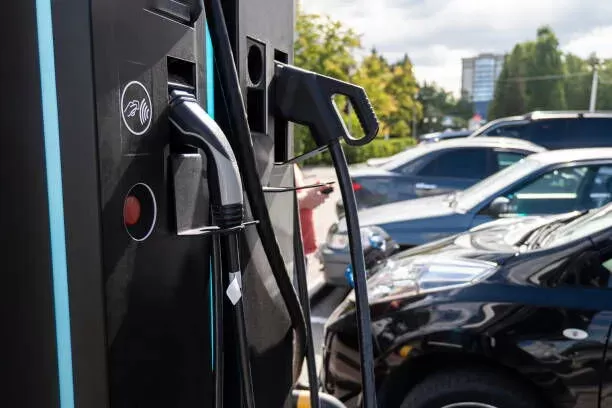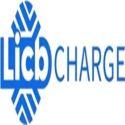Notifications

8 minutes, 36 seconds
-19 Views 0 Comments 0 Likes 0 Reviews

As a Leading EV Charger Manufacturer in China, LiCB Charge Offers Reliable AC and DC Electric Vehicle Charging Stations Along with Comprehensive Charging Solutions.
As electric vehicles (EVs) become more popular, the demand for efficient and rapid charging infrastructure is rising just as quickly. EV charging is categorized into three levels—Level 1, Level 2, and Level 3—each offering different speeds and capabilities. Among these, Level 3 charging stations stand out as the fastest and most powerful option currently available for public and commercial use.
Often referred to as DC Fast Charging (DCFC), Level 3 chargers are engineered for speed and efficiency, capable of delivering power outputs ranging from 50 kilowatts (kW) to over 500 kW. However, not all EVs can take full advantage of these high-speed chargers. The actual charging rate is limited by the maximum input power the vehicle can accept. For instance, if an EV supports a maximum of 50 kW, plugging it into a 350 kW charger will still only charge it at 50 kW.
This article explores the technology behind Level 3 chargers, how they differ from Level 1 and Level 2 options, and what they mean for EV drivers, fleet operators, and property owners.
To understand Level 3 charging, it’s essential to understand the difference between alternating current (AC) and direct current (DC):
AC power is what comes from the electric grid and powers our homes and businesses.
DC power is the type of electricity stored in batteries—including EV batteries.
Since EV batteries store only DC power, electricity from the grid must be converted from AC to DC before it can charge the battery. The primary difference between charging levels lies in where and how quickly this AC-to-DC conversion occurs.
In Level 1 and Level 2 charging, the AC-to-DC conversion takes place inside the EV via its onboard charger. This internal system limits the charging speed based on the vehicle’s design.
Level 1 Charging: Uses a standard 120-volt household outlet. It’s the slowest method, typically adding about 2 to 5 miles of range per hour.
Level 2 Charging: Uses a 240-volt outlet, similar to that of a dryer or oven. It delivers 10 to 60 miles of range per hour, making it suitable for residential, workplace, and commercial charging.
Unlike Levels 1 and 2, Level 3 chargers convert AC to DC externally, within the charging unit itself. This bypasses the vehicle’s onboard charger and sends DC power directly to the battery, drastically reducing charging time.
Level 3 chargers typically deliver 50 kW to 350 kW, with some ultra-fast models reaching up to 500 kW. This enables many EVs to charge from 20% to 80% in just 15 to 45 minutes, depending on battery size and vehicle capabilities.
Level 3 chargers demand significantly more power than Levels 1 and 2:
Level 2: Operates on a 240-volt single-phase circuit.
Level 3: Requires a 480-volt three-phase power supply, typically available only in industrial or commercial settings.
Because of this, Level 3 chargers are rarely installed at homes and are more commonly found at public stations, highway rest stops, commercial properties, and fleet depots.
Level 3 charging equipment is larger, heavier, and more complex than Level 2 units. Some models weigh over 500 pounds and require robust installation, including:
Secure mounting
Advanced cooling systems
Electrical upgrades
Unlike Level 2 chargers (which primarily use the J1772 connector), Level 3 chargers support different fast-charging standards:
CCS (Combined Charging System): The most common standard in North America and Europe.
CHAdeMO: An older standard used mainly by Japanese automakers.
Tesla Supercharger: Proprietary to Tesla, although adapters exist for non-Tesla vehicles.
| Charging Level | Voltage | Power Output | Typical Charging Time | Range Added (30 mins) |
|---|---|---|---|---|
| Level 2 | 240V | 3.3–19.2 kW | 4–8 hours (full charge) | 10–30 miles |
| Level 3 (DCFC) | 480V+ | 50–500 kW | 15–45 mins (20–80%) | 60–200+ miles |
Actual results depend on battery size, initial state of charge, temperature, and the vehicle’s charging capability.
Due to their cost and complexity, Level 3 chargers are best suited for:
Public Charging Stations: Along highways and in cities for long-distance and fast turnaround.
Fleet Charging Depots: Perfect for electric taxis, buses, delivery vans, and ride-share vehicles.
Commercial Locations: Hotels, shopping centers, and service stations looking to attract EV drivers.
For many EV owners who charge overnight or at work, Level 3 isn’t a necessity—but it becomes essential for road trips or time-sensitive operations.
Despite their benefits, Level 3 chargers come with challenges:
Installation can cost $30,000 to over $100,000, factoring in:
Utility upgrades
Permitting and site preparation
Equipment and installation
Maintenance and networking fees
Not all EVs support DC fast charging. Some entry-level or older models are limited to Level 2, even when plugged into a Level 3 charger.
DC fast chargers place a heavy load on the electrical grid, especially when multiple units operate simultaneously. This may trigger high peak demand charges and require utility coordination.
Level 3 stations are currently less widespread than Level 2 units due to higher costs. However, availability is growing thanks to government incentives and private investment.
Despite the obstacles, Level 3 chargers offer compelling benefits:
Rapid Turnaround: Reduce wait times for customers and maximize fleet uptime.
Increased Foot Traffic: Attract EV drivers to commercial properties offering fast charging.
Sustainability Goals: Support carbon reduction targets and qualify for green incentives.
Future-Proof Investment: Prepare for next-gen EVs with higher charging capacities.
Level 3 charging stations are transforming the EV experience by significantly reducing recharge times. While the upfront investment is high, the long-term benefits for businesses, fleets, and the environment are even higher.
As more EVs with faster charging capabilities enter the market, and as public and private investment in infrastructure grows, Level 3 chargers will play a critical role in accelerating the transition to a clean, electric future.
Whether you’re a fleet operator, commercial property owner, or EV enthusiast, Level 3 charging offers the speed, power, and convenience to keep pace with the evolving world of electric mobility.Know more about Google SEO Directory
China EV Chargers EV Charger Manufacturer Smart EV Chargers Electric Car Chargers Electric Vehicle Chargers Electric Car Charging Stations

